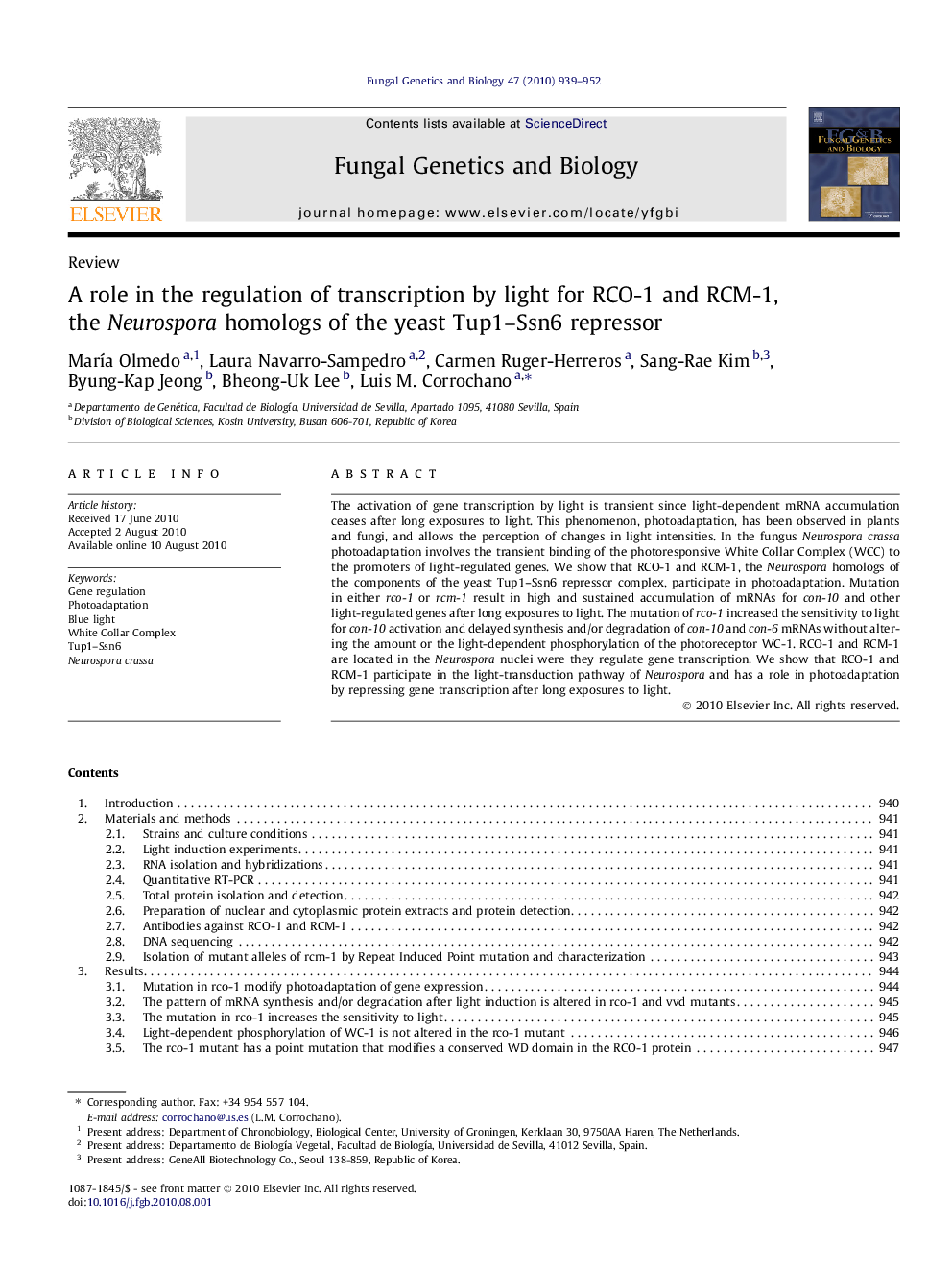| Article ID | Journal | Published Year | Pages | File Type |
|---|---|---|---|---|
| 10939631 | Fungal Genetics and Biology | 2010 | 14 Pages |
Abstract
The activation of gene transcription by light is transient since light-dependent mRNA accumulation ceases after long exposures to light. This phenomenon, photoadaptation, has been observed in plants and fungi, and allows the perception of changes in light intensities. In the fungus Neurosporacrassa photoadaptation involves the transient binding of the photoresponsive White Collar Complex (WCC) to the promoters of light-regulated genes. We show that RCO-1 and RCM-1, the Neurospora homologs of the components of the yeast Tup1-Ssn6 repressor complex, participate in photoadaptation. Mutation in either rco-1 or rcm-1 result in high and sustained accumulation of mRNAs for con-10 and other light-regulated genes after long exposures to light. The mutation of rco-1 increased the sensitivity to light for con-10 activation and delayed synthesis and/or degradation of con-10 and con-6 mRNAs without altering the amount or the light-dependent phosphorylation of the photoreceptor WC-1. RCO-1 and RCM-1 are located in the Neurospora nuclei were they regulate gene transcription. We show that RCO-1 and RCM-1 participate in the light-transduction pathway of Neurospora and has a role in photoadaptation by repressing gene transcription after long exposures to light.
Related Topics
Life Sciences
Biochemistry, Genetics and Molecular Biology
Cell Biology
Authors
MarÃa Olmedo, Laura Navarro-Sampedro, Carmen Ruger-Herreros, Sang-Rae Kim, Byung-Kap Jeong, Bheong-Uk Lee, Luis M. Corrochano,
